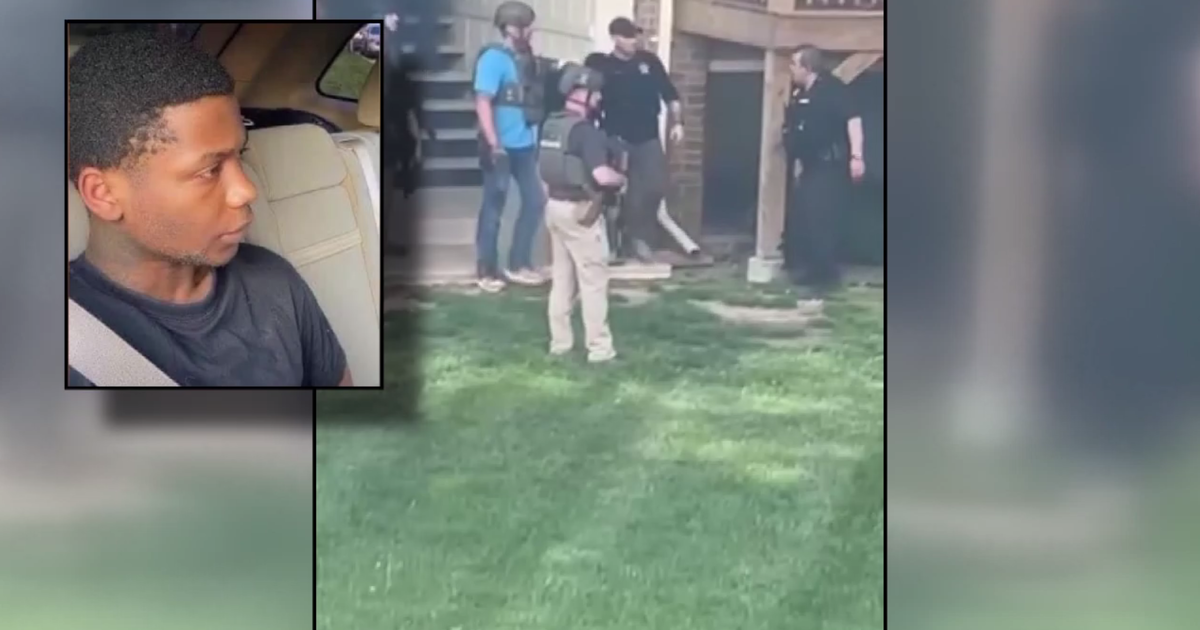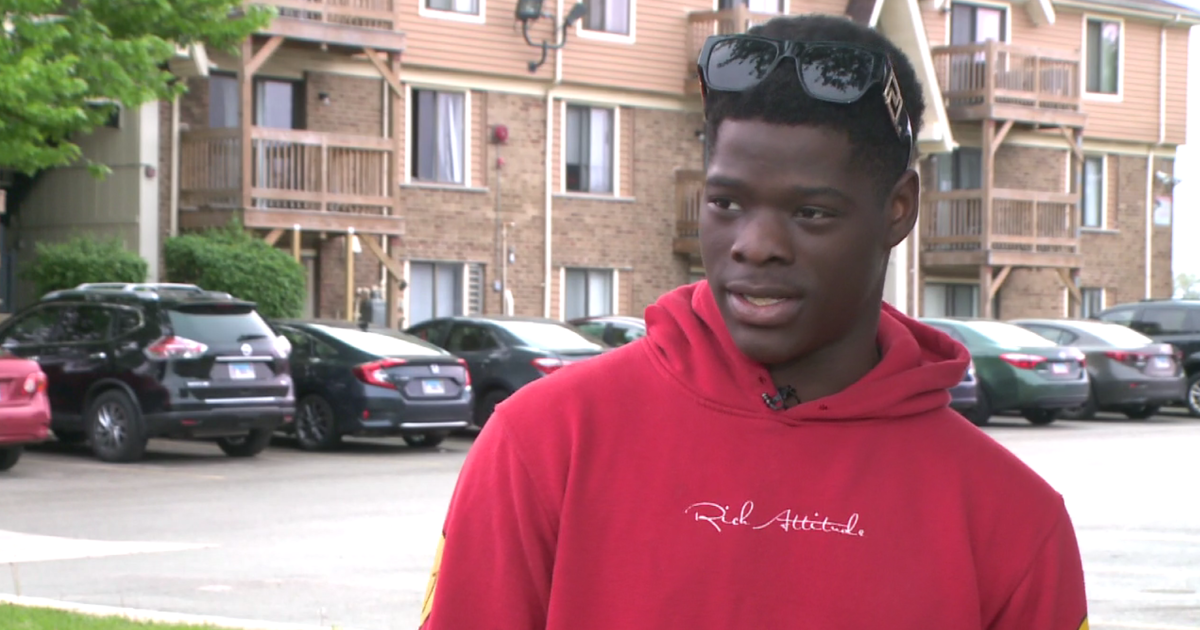Inspector General: COPA Is Not Living Up To Policies On Release Of Video, Reports On Police Use-Of-Force Incidents
CHICAGO (CBS) -- The Chicago Office of the Inspector General on Tuesday released a report concluding that the Civilian Office of Police Accountability is not following policies requiring the release of video and documents to the public within 60 days in police use-of-force incidents.
The policy says COPA must release within 60 days "videotape and audiotape and certain specified police reports" related to use-of-force incidents that involve officers firing shots, or using Tasers and otherwise using force in a way that causes death or great bodily harm.
COPA is responsible for identifying all use-of-force incidents governed by the policy and releasing the materials accordingly. The Chicago Police Crime Prevention and Information Center is responsible for notifying COPA of such incidents. COPA relies on other agencies, including the Chicago Police Department itself and the Office of Emergency Management and Communications to provide it with video and files.
The Inspector General's office found failures on multiple levels.
In particular, the OIG said COPA does not always post video, audio, and police documents within 60 days of use-of-force incidents as the policy requires. The OIG also said the staff at the police Crime Prevention and Information Center, or CPIC, does not understand notification guidelines and thus it is not clear that COPA is being notified of all relevant use-of-force incidents.
Finally, COPA's discretion in releasing materials other than those mandated by the policy is lacking, the report said.
As CBS 2 Political Investigator Dana Kozlov reported, the report came two weeks after Chicago Police shot and killed Miguel Vega, 26, in Pilsen. Officers said they were shot at while getting out of their car on West 19th Street before they fired and struck Vega.
It is one of at least six cases since mid-July that COPA is investigating involving force that caused death or great bodily harm by police.
"Anytime this goes wrong, it sort of undermines trust in that accountability manifested in the system," Deborah Witzburg, Deputy Inspector General for Public Safety, told Kozlov.
Back in February 2016, then-Mayor Rahm Emanuel committed to adopting a recommendation by the Mayor's Police Accountability Task Force requiring a video release policy. The Emanuel Administration said Chicago would be the first U.S. city with a "specific, written policy that guarantees the public's timely access to video and audio recordings relating to sensitive police-involved incidents."
Before that, the task force found, the city usually withheld video recordings from public release until an investigation was complete, which contributed to mistrust toward law enforcement agencies, the OIG said.
The city has been trying to restore trust with the public ever since Officer Jason Van Dyke shot and killed Laquan McDonald in 2014. The video showed McDonald walking away from Van Dyke, but it wasn't released for more than a year.
The current policy devised by the task force required that the city release video and other materials within 60 days of incidents falling into three categories:
• Firearm discharges by officers, whether someone is shot or not and whether an allegation of misconduct is made or not;
• Taser discharges by officers that result in death of great bodily harm;
• The use of force in other ways by officers that causes death or great bodily harm to a person in custody.
For such incidents, the documents that must be released within 60 days of such incidents include video and audio from CPD dash cams, body cams, and police observation device cameras; audio of 911 calls, dispatch recordings, radio calls; third-party audio and video; and related written reports.
There are stipulations in which certain government agencies may ask the city's Corporation Counsel to delay the release of the materials by up to 30 days. A court order may also hold up the release.
The OIG found that due to factors both within COPA and as a result of COPA's interactions with other agencies – specifically the CPD and the OEMC – video and information about use-of-force incidents does not always end up getting released within 60 days as the policy requires.
The OIG analyzed data on 122 use-of-force incidents, and found that 33 of them – or 27 percent – did not have any information released within 60 days.
COPA said in 14 of those incidents, its own staff mistakenly based the release deadline on the notification date about a use-of-force incident rather than the date that the incident actually happened, which COPA called an "oversight," The OIG said. For 12 more incidents, COPA measured the 60-day period from when the incidents were "flagged" as mandated for the release of information instead of when they actually happened, the OIG said.
Three more incidents were held up by legal delays. COPA was late to identify two more incidents as release-mandated by the policy, and the reasons the final two incidents had no information on them released before the deadline was unclear.
"This in my mind is not a volume problem," Witzburg said. "It's an impact problem."
The OIG also broke down how OEMC shares some blame in the failure to ensure information release deadlines are met. The OIG analyzed OEMC data related to 352 incidents that could have been eligible for public release, and found that the OEMC failed to complete 201 – or 57 percent – of COPA's requests for information within 60 days. The average completion time was 67.3 days, the OIG said.
Further, the OIG said the information release policy does not set a timeline for the OEMC's, or any other city agency's, delivery of video and reports to COPA.
COPA told the OIG that the OEMC does not always provide video and audio for use-of-force incidents by the 60-day deadline, and said the OEMC has a "backlog" of requests from COPA and other city agencies. COPA said as a result, many use-of-force incidents do not have any relevant video or audio publicly posted.
For its own part, the OEMC said it became responsible for providing video and other materials not just to COPA, but several other agencies. The OEMC also said a new record retention schedule now requires the OEMC to keep some records for 90 days rather than 30, which has meant more records have to be considered whenever a request is issued.
The OEMC said it is considering training COPA staffer to find the video and audio files on their own rather than having OEMC staff do it for them, the OIG said.
The OIG also broke down problems with regard to CPIC – saying in some cases, the police unit expressed confusion about what kind of incidents required a notification to COPA. CPIC has said if it is uncertain whether someone in police custody was injured specifically as a result of police action, then it may choose not to tell COPA about an incident.
CPIC staff also complained about COPA's expectations for when and how it wants to be notified about certain types of incidents – saying COPA's demands "constantly change." There has been particular confusion about notifications for police-involved auto accidents and about who is responsible for telling COPA about Taser discharge incidents – the COPA guidelines say CPIC, the CPD says district supervisors.
Finally, the policy does not specify whether COPA can release information on police use-of-force incidents other than the ones specifically mentioned. COPA does so anyway on a discretionary basis – which the OIG said does foster transparency, but also raises doubts about how closely COPA is hewing to the policy.
For one example in August 2016, COPA released materials related to an incident that it deemed to be in the "public interest," even though it did not involve any officers firing guns or causing great bodily harm. COPA released the information because it had already been in the news and social media, and because there was "significant" use of force by officers, the OIG said.
The OIG said a formal policy should be determining whether video and information is released on an issue that falls outside of those involving death or great bodily harm, rather than just COPA's discretion.
The IG report did not examine the 60-day requirement as a policy, but Jamie Kalven, who has been fighting for police accountability and transparency for more than a decade, suggested maybe that should happen.
"I do think there's a question of just basic competence and care here," said Jamie Kalven, head of the Invisible Institute. "I also would question whether 60 days isn't simply too long."
The OIG called for several policy changes to the video release policy to ensure compliance with deadlines. The Inspector General advised that COPA should improve its own internal processes and work with the OEMC and the Mayor's office to come up with a better plan for timely delivery.
The OIG added that COPA should work with the CPIC to develop binding notification guidelines and ensure that CPIC staff are trained to execute them. Finally, the OIG recommended that the Mayor's office, the city Department of Law, and COPA review the policy's criteria for release and make it more specific if necessary.
COPA agreed with the recommendations, and said in the past year, it has already worked with the OEMC to ensure that materials on police use-of-force incidents are delivered in a timely fashion. The CPD also agreed with the OIG, and said it will work with COPA to develop clear guidelines for notifying COPA and a directive for how CPIC will notify COPA of incidents.
The OEMC also said it will work with COPA and the Mayor's office to improve the information release process. The Mayor's office said it will work with all the agencies to address the situation.
On Tuesday afternoon, a CPD representative said the department works closely and swiftly with COPA to get it what it needs for investigations. A COPA representative also said the office has or will modify practices to incorporate the OIG's recommendations.
"I don't know that the proof is yet in the pudding when it comes to it," Witzburg said. "But I'm heartened by the agencies' response."
The OIG looked at cases before February 2019 for its report and said it has not analyzed cases from more recently than that.






